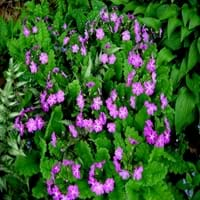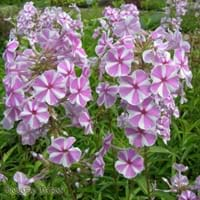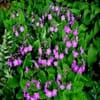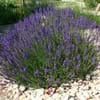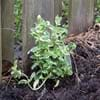Life Span
Perennial
Perennial
Type
Perennial
Flowering Plants
Origin
Eastern Europe, Southern Europe, Russia/Siberia, Southern Asia, Western Asia
California, Northwestern United States, United States
Types
Not available
Blue Moon, Clouds of Perfume
Number of Varieties
Not Available
Habitat
Roadsides, sand dunes, Waste areas
Rich Woods
USDA Hardiness Zone
5-9
4-8
Sunset Zone
Not Available
1a, 1b, 2a, 2b, 3a, 3b, 4, 5, 6, 7, 8, 9, 10, 11, 12, 13, 14, 15, 16, 17
Habit
Oval or Rounded
Mat-forming
Flower Color
White
Light Purple, Pink, Purple, Reddish Plum, White
Flower Color Modifier
Bicolor
Bicolor
Fruit Color
Yellow, Dark Red
Not Available
Leaf Color in Spring
Green
Green
Leaf Color in Summer
Green
Green
Leaf Color in Fall
Green, Light Yellow, Brown
Green
Leaf Color in Winter
Light Green
Not Available
Leaf Shape
Oblong
Ovate-lanceolate
Plant Season
Spring, Summer, Fall
Spring
Sunlight
Full Sun
Partial Sun, Partial shade
Type of Soil
Clay, Loam
Loam
The pH of Soil
Acidic, Neutral
Neutral
Soil Drainage
Well drained
Well drained
Tolerances
Drought
Not Available
Where to Plant?
Container, Ground, Pot
Container
How to Plant?
Divison, Seedlings, Stem Planting
Cuttings, Seedlings
Plant Maintenance
Low
Medium
Watering Requirements
Average Water Needs, Do Not over Water, Never Over-water, Requires regular watering, Water more in summer
Requires regular watering
In Summer
Lots of watering
Lots of watering
In Spring
Moderate
Moderate
In Winter
Average Water
Average Water
Soil pH
Acidic, Neutral
Neutral
Soil Type
Clay, Loam
Loam
Soil Drainage Capacity
Well drained
Well drained
Sun Exposure
Full Sun
Partial Sun, Partial shade
Pruning
Remove damaged leaves, Remove dead branches, Remove dead leaves
Remove dead flowers
Fertilizers
All-Purpose Liquid Fertilizer, fertilize in growing season
Apply 10-10-10 amount
Pests and Diseases
Slugs, Snails
Leaf spot, Powdery mildew, Rust
Plant Tolerance
Variety of soil types
Drought
Flower Petal Number
Single
Single
Foliage Texture
Medium
Medium
Foliage Sheen
Matte
Matte
Attracts
Insects
Hummingbirds, Butterflies
Allergy
Abdominal pain, Constipation, Diarrhea, Skin irritation
Mild Allergen
Aesthetic Uses
Beautification, Borders, Landscape Designing, Showy Purposes
Ground Cover
Beauty Benefits
Good for skin, Making cosmetics, Stops hair loss
Not Available
Environmental Uses
Air purification, Food for insects, Versatility
Air purification
Medicinal Uses
Eczema
Boils, Eczema, Intestinal disorders
Part of Plant Used
Root
Flowers, Leaves, Root
Other Uses
Decoration Purposes, Medicinal oil, Showy Purposes, Used as Ornamental plant, Used for its medicinal properties
As a tea substitute, Used as eyewash
Used As Indoor Plant
Yes
No
Used As Outdoor Plant
Yes
Yes
Garden Design
Edging, Feature Plant, Groundcover, Mixed Border
Mixed Border, Rock Garden / Wall, Wildflower
Botanical Name
MALUS domestica 'Winesap'
Phlox amplifolia
Common Name
Apple, Dessert Apple, Winesap Apple
Phlox amplifolia
In Hindi
Primula sieboldii
Phlox amplifolia
In German
Siebolds Primel
Phlox amplifolia
In French
Primrose japonaise
Phlox amplifolia
In Spanish
Primula sieboldii
Phlox amplifolia
In Greek
Primula sieboldii
Phlox amplifolia
In Portuguese
Primula sieboldii
Phlox amplifolia
In Polish
Pierwiosnek Siebolda
Phlox amplifolia
In Latin
Primula sieboldii
Phlox amplifolia
Phylum
Magnoliophyta
Magnoliophyta
Class
Magnoliopsida
Magnoliopsida
Family
Onagraceae
Polemoniaceae
Clade
Angiosperms, Eudicots, Rosids
Angiosperms, Asterids, Eudicots
Tribe
Onagreae
Phlocideae
Subfamily
Onagroideae
Polemonioideae
Importance of Japanese primrose and Phlox amplifolia
Want to have the most appropriate plant for your garden? You might want to know the importance of Japanese primrose and Phlox amplifolia. Basically, these two plants vary in many aspects. Compare Japanese primrose and Phlox amplifolia as they differ in many characteristics such as their life, care, benefits, facts, etc. Every gardener must at least have the slightest clue about the plants he wants to plant in his garden. Compare their benefits, which differ in many ways like facts and uses. The medicinal use of Japanese primrose is Eczema whereas of Phlox amplifolia is Boils, Eczema and Intestinal disorders. Japanese primrose has beauty benefits as follows: Good for skin, Making cosmetics and Stops hair loss while Phlox amplifolia has beauty benefits as follows: Good for skin, Making cosmetics and Stops hair loss.
Compare Facts of Japanese primrose vs Phlox amplifolia
How to choose the best garden plant for your garden depending upon its facts? Here garden plant comparison will help you to solve this query. Compare the facts of Japanese primrose vs Phlox amplifolia and know which one to choose. As garden plants have benefits and other uses, allergy is also a major drawback of plants for some people. Allergic reactions of Japanese primrose are Abdominal pain, Constipation, Diarrhea and Skin irritation whereas of Phlox amplifolia have Mild Allergen respectively. Having a fruit bearing plant in your garden can be a plus point of your garden. Japanese primrose has showy fruits and Phlox amplifolia has no showy fruits. Also Japanese primrose is not flowering and Phlox amplifolia is not flowering . You can compare Japanese primrose and Phlox amplifolia facts and facts of other plants too.
